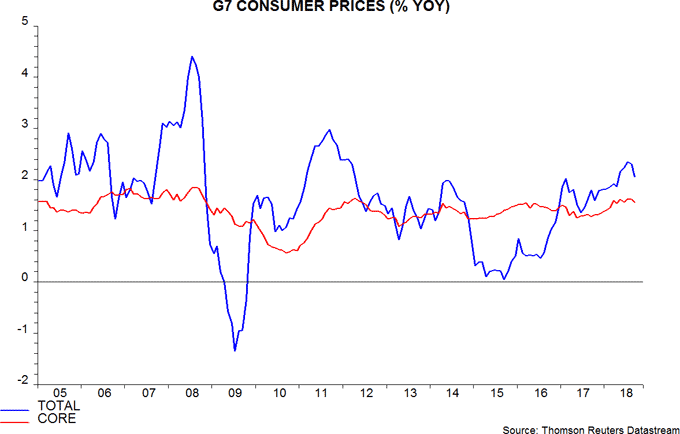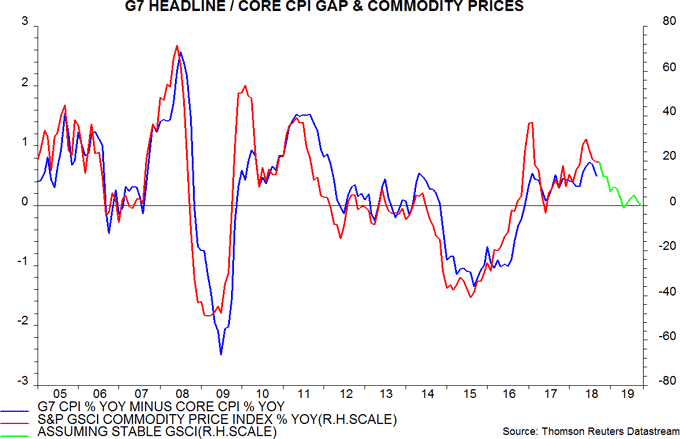Profits taking strain of rising wage growth
Recent inflation news is consistent with the view here that rising wage cost growth is having a greater impact on profit margins than core price trends.
G7 headline and core (i.e. ex. food / energy and large tax changes) consumer price inflation eased for a second month in September. The core rate remains near the top of its post-crisis range but the recent July peak only matched a 2012 high, when labour markets and wage pressures were much weaker – see first chart.

The headline / core gap probably peaked in July and is likely to fall further into early 2019, assuming that commodity prices remain at their current level – second chart.

The judgement here has been that firms would struggle to push through price increases against a backdrop of restrictive monetary conditions and slowing economic momentum.
The third chart compares annual growth rates of nominal GDP and narrow money for the G7 plus E7 grouping. Nominal GDP expansion probably peaked in the second quarter of 2018, the latest data point, with money trends signalling a sustained slowdown. Assuming stable or more likely rising wage growth, lower expansion of aggregate nominal income implies a slowdown or outright weakness in profits and / or employment. Profits should take the strain first, leading to subsequent employment cut-backs.


Reader Comments